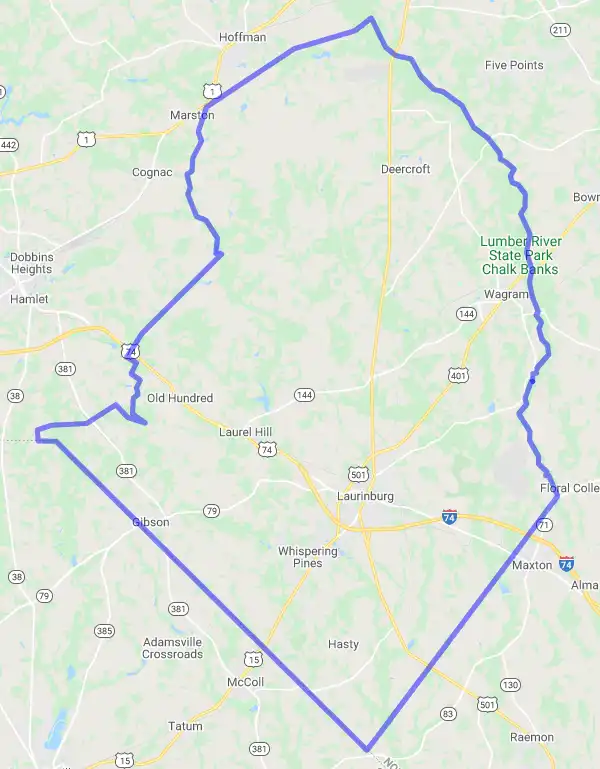Loading Data
USDA Eligibility Boundaries for Scotland, North Carolina 


There are no geographical USDA loan restrictions in this county. 100% of Scotland County is eligible for rural development USDA home loans.
The United States Department of Agriculture has rated the natural amenities of this region. On a scale of one to seven, Scotland county is rated a 3. The average temperature during the month of June is 79.0℉ and the average temperature in January is 43.9℉. The typical humidity of this area is approximately 78% and the area covered by water is 0.46%. The overall influence score for Scotland is 7.
The map below displays geographic boundaries of Scotland, North Carolina with a blue border. There are no significant USDA regional restrictions in this county. For higher resolution imagery click the map to zoom in or search for specific postal (zip) codes, city names or even counties. You can also search for specific addresses using the power search feature here.
Select from the above list of cities in Scotland County. Cities most likely to have USDA loan eligible properties are highlighted in the drop down list. Alternatively, use the search form to find your favorite counties, cities and zip codes in North Carolina.

Scotland County is located in the southeastern corner of North Carolina, near the South Carolina border. According to the U.S. Census Bureau, Scotland County has a population of 35,952 people. The population is 65.8% African American, 28.6% White, and 4.7% Hispanic or Latino. The median household income is $30,907 and 17.5% of the population lives below the poverty line.
The climate in Scotland County is humid subtropical with hot summers and mild winters. The county averages 48 inches of rain per year and has an average temperature of 64 degrees Fahrenheit throughout the year.
Scotland County is mainly rural, with most of its population living in small towns and villages. The county seat is Laurinburg, which is home to Saint Andrews University, a private liberal arts college. Other notable towns include Gibson and Wagram. There are many farms in Scotland County that produce cotton, soybeans, corn, wheat, and tobacco.
Scotland, North Carolina

Loan officers and realtors can answer your questions about USDA home loan programs.
For direct assistance with North Carolina USDA program details you can also contact:
The North Carolina State Office, located in Raleigh, NC, administers USDA Rural Development programs through six Area Offices and fourteen field offices across the state.Featured Property from USDA Loan Eligible Regions of North Carolina
State Director's Office: 919-873-2015
Business Programs: 919-873-2040
Community Programs: 919-873-2030
Multi-Family Housing Programs: 919-873-2050
Single Family Housing Programs: 919-873-2051

